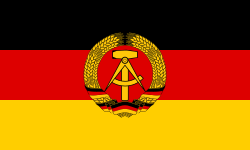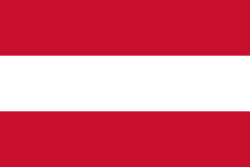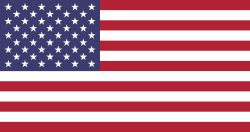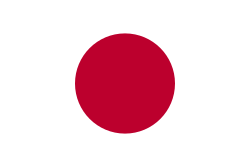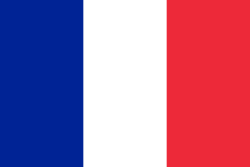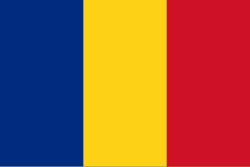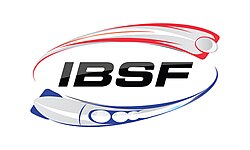Bob-Weltmeisterschaft 1982
Die 36. Bob-Weltmeisterschaft fand 1982 bereits zum 14. Mal in St. Moritz in der Schweiz statt.
Männer
Zweierbob
Datum: 6./7. Februar 1982[1]
Teilnehmer: 30 Mannschaften aus 16 Ländern
| Platz | Land | Sportler | 1. Lauf min | 2. Lauf min | 3. Lauf min | 4. Lauf min | Endzeit min |
|---|---|---|---|---|---|---|---|
| 1 | Erich Schärer Max Rüegg | 1:10,27 | 1:10,16 | 1:10,01 Bahnrekord | 1:10,89 | 4:41,33 | |
| 2 | Hans Hiltebrand Ulrich Bächli | 1:10,15 Bahnrekord | 1:10,50 | 1:10,54 | 1:10,67 | 4:41,86 +0,53 s | |
| 3 | Horst Schönau Andreas Kirchner | 1:10,39 | 1:10,47 | 1:10,65 | 1:10,49 | 4:42,00 +0,67 s | |
| 4 | Detlef Richter Dietmar Schauerhammer | 1:10,62 | 1:10,98 | 1:11,34 | 1:11,22 | 4:44,16 +2,83 s | |
| 5 | Andreas Weikenstorfer Hans Jürgen Hartmann | 1:10,98 | 1:10,90 | 1:11,42 | 1:11,46 | 4:44,76 +3,43 s | |
| 6 | Jānis Ķipurs Aivars Šnepsts | 1:11,03 | 1:11,13 | 1:11,02 | 1:12,06 | 4:45,24 +3,91 s | |
| 7 | Anton Fischer Franz Niessner | 1:11,03 | 1:11,13 | 1:11,02 | 1:12,06 | 4:45,24 +4,38 s | |
| 8 | Franz Paulweber Gerd Zaunschirm | 4:45,71 +4,85 s | |||||
| 9 | Fritz Sperling Franz Köfel | 4:45,24 | |||||
| 10 | Wjatscheslaw Schawlew Alexander Paschkow | 4:46,69 | |||||
| 11 | Job van Oostrum John Drost | 4:47,48 | |||||
| 12 | Guerrino Ghedina Paolo Lupi | 4:48,09 | |||||
| 13 | Jonnie Woodall Paddy Bredin | 4:48,53 | |||||
| 14 | Marco Bellodis Walter Mattiuz | 4:49,45 | |||||
| 15 | James Carr Clarke Flynn | 4:49,67 | |||||
| 16 | Rolf Höglund Jonny Persson | 4:49,87 | |||||
| 17 | Tony Carlino Bob Brehel | 4:50,01 | |||||
| 18 | Bob Hickey Jim Tyler | 4:50,45 | |||||
| 19 | Hiroshi Okachi Shozo Suzuki | 4:50,66 | |||||
| 20 | Gerard Christaud Patrick Lachaud | 4:50,86 |
Viererbob
Datum: 13./14. Februar 1982[2][3][4]
Teilnehmer: 26 Mannschaften aus 16 Ländern
| Platz | Land | Sportler | 1. Lauf min | 2. Lauf min | 3. Lauf min | 4. Lauf min | Endzeit min | |
|---|---|---|---|---|---|---|---|---|
| 1 | Silvio Giobellina Heinz Stettler Urs Salzmann Rico Freiermuth | 1:07,58 Bahnrekord | 1:08,12 | 1:08,07 | 1:08,17 | 4:31,94 | ||
| 2 | Bernhard Lehmann Roland Wetzig Bogdan Musiol Eberhard Weise | 1:07,89 | 1:08,02 | 1:08,12 | 1:08,93 | 4:32,96 +1,02 s | ||
| 3 | Erich Schärer Franz Isenegger Tony Rüegg Max Rüegg | 1:08,01 | 1:08,43 | 1:08,30 | 1:08,41 | 4:33,15 +1,21 s | ||
| 4 | Fritz Sperling Franz Köfel Andreas Schwab Gerhard Redl | 1:08,52 | 1:08,48 | 1:08,56 | 1:08,89 | 4:34,45 +2,51 s | ||
| 5 | Horst Schönau Andreas Kirchner Dietmar Schauerhammer Hans-Jürgen Gerhardt | 1:08,25 | 1:08,71 | 1:08,76 | 1:09,00 | 4:34,72 +2,78 s | ||
| 6 | Franz Paulweber Wolfgang Haid Stefan Heis Gerhard Zaunschirm | 1:08,67 | 1:09,24 | 1:08,66 | 1:09,14 | 4:35,71 +3,77 s | ||
| 7 | Jānis Ķipurs Zintis Ekmanis Wladimir Alexandrow Aivars Šnepsts | 1:09,04 | 1:09,36 | 1:08,72 | 1:09,48 | 4:36,60 +4,66 s | ||
| 8 | Anton Fischer Franz Niessner Uwe Eisenreich Hans Metzler | 1:09,55 | 1:09,33 | 1:09,23 | 1:09,33 | 4:37,43 +5,49 s | ||
| 9 | Andreas Weikenstorfer Josef Gerg Hans Jürgen Hartmann Alexander Wernsdorfer | 1:08,87 | 1:09,59 | 1:09,36 | 1:09,89 | 4:37,71 +5,77 s | ||
| 10 | Jonnie Woodall | 1:09,57 | 1:09,91 | 1:09,02 | 1:09,48 | 4:37,98 +6,04 s | ||
| 11 | Marco Bellodis | 4:38,83 +6,89 s | ||||||
| 12 | Albino Zambelli | 4:38,99 +7,05 s | ||||||
| 13 | Jānis Skrastiņš Wjatscheslaw Schawlew Alexander Paschkow Rihards Kotāns | 4:39,05 +7,11 s | ||||||
| 14 | Malcolm Lloyd | 4:39,78 +7,84 s | ||||||
| 15 | Bob Hickey | 4:39,84 +7,90 s | ||||||
| 16 | Gerard Christaud | 4:40,68 +8,74 s | ||||||
| 17 | Hiroshi Okachi | 4:41,56 +9,62 s | ||||||
| 18 | Job van Oostrum | 4:41,75 +9,81 s | ||||||
| 19 | Rolf Höglund | 4:42,66 +10,72 s | ||||||
| 20 | Ion Duminicel | 4:42,82 +10,88 s | ||||||
| 21 | Bill Renton | 4:43,24 +11,30 s | ||||||
| ? | Kirby Best | |||||||
| ? | Dieng-Cheng Wu | |||||||
| ? | Takao Sakai | |||||||
| ? | Nenad Prodanovic | |||||||
| - | James Carr | DNF | ||||||
Medaillenspiegel
| Platz | Land | Gold | Silber | Bronze | Gesamt |
|---|---|---|---|---|---|
| 1 | 2 | 1 | 1 | 4 | |
| 2 | 0 | 1 | 1 | 2 |
Literatur
- Manfred Seifert: Sport82. Ein Jahrbuch des DDR-Sport. Sportverlag Berlin, 1982, ISSN 0232-203X, S. 237.
- Deutsches Sportecho. Sportverlag Berlin, ISSN 0323-8628 (1982).
Einzelnachweise
- ↑ Freiburger Nachrichten vom 8. Februar 1982 S. 11. Abgerufen am 23. Dezember 2024.
- ↑ Thuner Tagblatt vom 13. Februar 1982 S. 11. Abgerufen am 25. Dezember 2024.
- ↑ Walliser Volksfreund vom 15. Februar 1982 S. 9. Abgerufen am 25. Dezember 2024.
- ↑ Neue Zürcher Zeitung vom 12. Februar 1982 S. 53. Abgerufen am 28. Dezember 2024.
Auf dieser Seite verwendete Medien
Die quadratische Nationalfahne der Schweiz, in transparentem rechteckigem (2:3) Feld.
Die Staatsflagge der Deutschen Demokratischen Republik, vom 1. Oktober 1959 bis 3. Oktober 1990
Flagge Österreichs mit dem Rot in den österreichischen Staatsfarben, das offiziell beim österreichischen Bundesheer in der Charakteristik „Pantone 032 C“ angeordnet war (seit Mai 2018 angeordnet in der Charakteristik „Pantone 186 C“).
Flagge des Vereinigten Königreichs in der Proportion 3:5, ausschließlich an Land verwendet. Auf See beträgt das richtige Verhältnis 1:2.
Flagge des Vereinigten Königreichs in der Proportion 3:5, ausschließlich an Land verwendet. Auf See beträgt das richtige Verhältnis 1:2.
Flag of Canada introduced in 1965, using Pantone colors. This design replaced the Canadian Red Ensign design.
Chinese Taipei Olympic Flag. According to the official website of Chinese Taipei Olympic Committee, Blue Sky(circle) & White Sun(triangles) above the Olympic rings is neither the National Emblem of the Republic of China, nor the Party Emblem of Kuomintang (KMT), but a design in between, where the triangles do not extend to the edge of the blue circle, as registered at International Olympic Committee in 1981 and digitally rendered in 2013. Besides, the blue outline of the five-petaled plum blossom is broader than the red one. Moreover, the CMYK code of the blue one and the Blue Sky & White Sun is "C100-M100-Y0-K0", and different from the Olympic rings (C100-M25-Y0-K0). Note that it's the only version recognized by IOC.
Chinese Taipei Olympic Flag. According to the official website of Chinese Taipei Olympic Committee, Blue Sky(circle) & White Sun(triangles) above the Olympic rings is neither the National Emblem of the Republic of China, nor the Party Emblem of Kuomintang (KMT), but a design in between, where the triangles do not extend to the edge of the blue circle, as registered at International Olympic Committee in 1981 and digitally rendered in 2013. Besides, the blue outline of the five-petaled plum blossom is broader than the red one. Moreover, the CMYK code of the blue one and the Blue Sky & White Sun is "C100-M100-Y0-K0", and different from the Olympic rings (C100-M25-Y0-K0). Note that it's the only version recognized by IOC.
Flag of the Socialist Federal Republic of Yugoslavia (1946-1992).
The design (blazon) is defined in Article 4 of the Constitution for the Republic of Yugoslavia (1946). [1]
Flag of the Socialist Federal Republic of Yugoslavia (1946-1992).
The design (blazon) is defined in Article 4 of the Constitution for the Republic of Yugoslavia (1946). [1]


